
|

|
|
Home Site Search Contact Us Subscribe
|
|
One-on-One: Craig Bassam and Scott Fellows: "If a product is designed and crafted well, it should not go out of fashion." BassamFellows' "Craftsman Modern" is based on the partners' devotion to Modernist architecture, high-level craftsmanship, and the use of beautiful, natural materials. By Vladimir Belogolovsky March 1, 2018 Known for their understated and meticulously handcrafted designs, ranging from architecture, interiors, and furniture to branding, curating lifestyle objects, and designing such diverse items as leather handbags, sneakers, and cashmere t-shirts, Craig Bassam and Scott Fellows are the founders of an American luxury design company BassamFellows. They operate out of the 1952 Philip Johnson-designed single-story office building in Ridgefield, Connecticut, that the partners recently purchased and restored. The practice is known for its unique style called “Craftsman Modern,” based on the partners’ devotion to Modernist architecture, high-level craftsmanship, and the use of beautiful, natural materials. The designers are particularly recognized for their iconic Tractor Stool; Daybed, distinguished for its slim, simple profile; and their just-released furniture collection called Geometric that reintroduced tubular steel, reminiscent of now classic pieces championed by the Bauhaus, to achieve a sense of lightness and suspension.
The partners’ philosophy extends to their lifestyles, as they live by the same principles as they preach in their work – here at the 1951 Philip Johnson-designed Hodgson House in New Canaan, Connecticut, and a vacation house in Rancho Mirage, California. They describe their houses as “pavilions for living.” The designers enjoy these refined, disciplined environments for their purity, clarity, and attention to every detail. Our conversation took place over lunch at a Manhattan showroom with the company’s most representative furniture designs on display all around us.
Vladimir Belogolovsky: How did you two meet, and what sparked your decision to form BassamFellows?
Scott Fellows: I am originally from the Western part of New York State. I graduated in business administration from Carnegie Mellon University in Pittsburgh, and some years later completed my MBA at Harvard. I also studied fashion design at FIT [Fashion Institute of Technology]. I was a business guy with a keen interest in design. That led me to playing a role that was in its infancy at the time. I became a creative director for fashion brands.
I met Craig here in New York City in 1996. At the time, I was working for Ferragamo and, a few years later, as creative director of Bally, working on turning the company around and bringing it back to its luxury roots. My model was Tom Ford, a strong, visionary design leader who was then the creative director of Gucci and Yves Saint Laurent. He established a great relationship with his CEO as an independent and equal partner.
Craig Bassam: My father was in the military, so I grew up moving every few years around Australia and Asia, but I consider Sydney home. I enjoyed the international experience growing up, and I always wanted to live and work in Europe. So after graduating from Sydney University with an architecture degree, I moved to Austria, working for five years in Vienna and Graz. Before going back to Australia, I came to New York for what I thought would be a short trip. But while here, I was offered a job... I never left.
I started my own architecture practice just after meeting Scott here. I was working on both residential and commercial commissions, including designing TPG Capital’s offices in London. After TPG purchased Bally, I was hired to design Bally’s corporate headquarters in Lugano, Switzerland, and subsequent retail stores. Scott and I were already life partners by then. In 2003, we became professional partners by starting our own brand.
VB: Your practice is based on a holistic approach, designing a whole environment – from architecture and interiors, to furniture, accessories, and clothing.
SF: We make products that we want to use ourselves. We embrace natural materials, solid construction, utility, stripping the unnecessary away to find the essential, beauty without elaboration, and a tradition of craftsmanship. We are both inspired by Modernism and its principles that we combine with warmth. Other important notions are comfort, clarity, sense of touch, timelessness. People call us minimalists, which may be interpreted as an absence of details, but we see ourselves entirely about details and craft. When we presented our first collection of solid teak and solid brass products, including our wooden Tractor Stool, at the 2003 Salone de Mobile, we stood out in a sea of injected molded plastic and foam. Computer design opened up many possibilities, but at the time, it seemed that everything was beginning to be designed and made by machine. We resisted that by bringing something humanistic that was created by hand.
CB: Everything we do is an extension of our architecture, whatever it may be – furniture, leather bags, or sneakers. We both don’t understand this notion of something being old fashioned. If a product is designed and crafted well, it should not go out of fashion. Look at furniture; there are designs such as the Barcelona Chair by Mies, which seems to be totally untouched by time. There is something very appealing about the longevity of a particular design. The reason we wanted to be independent was so that we could be uncompromising in our vision. Our work is not about projecting a statement or to stir controversy. We are both interested in quality of touch and feel, as well as clarity of line and simplicity of form. We try to create products, every detail of which would address the user directly, without any distraction. To us, it all comes down to the essentials – what is it that is absolutely necessary to support a table or a chair? Would we add an element that may look interesting? No – we start with structure and construction. How do we hold something up?
VB: You just mentioned sneakers. Who designs them?
CB: I do the sketches!
VB: Did you learn that at school?
CB: Of course not! But I work with technicians and they direct me. We like collaborations. They help work out the construction and parameters.
VB: In other words, there is nothing that a designer can’t design.
SF: Sure, providing there is the right collaboration with technicians, developers, and artisans. It’s the same for architects who design buildings – it’s an entirely collaborative process. How is that different from a shoe?
CB: Design of a building is not about putting up a façade. You need to understand so many aspects of how the building operates. It’s the same with shoes – we need to understand the material, the structure. The overall shape can be manipulated based on certain parameters. The manufacturer will always tell me if something may not work.
VB: The most frequently mentioned words and phrases that I came across while reading about your work are “luxury” and “luxury of craftsmanship.” Is that accurate?
SF: I guess there is not a better word to describe a particular quality and feeling that we are trying to achieve. What we are concerned with is how do we design and build the most beautiful and well-crafted products that would be meaningful over a long period of time. Everything we do affects very directly peoples’ quality of life. Our designs are very direct, understated, and almost utilitarian.
CB: I hate the word “luxury.” The reason I always cringe when I hear it is because it implies something fancy, expensive, extravagant, and that’s not who we are at all. We both are obsessed with quality; we are after things that are understated but beautiful. None of the things we do are decorative, applied, or superfluous; nothing is about embellishment. We concentrate on designing absolutely essential things that we all use every single day. We want to achieve purity and good craftsmanship to show that there is a lot of care and precision that goes into the making of our products.
SF: And to us beauty is absolutely essential. There is beauty in materials we use.
CB: There is beauty in proportions, in lightness, in how things are made and put together.
VB: Many architects now shy away from establishing their brand or signature style. What is your position? Do you want your products and aesthetics to be known as BasamFellows?
CB: Absolutely, and people start recognizing us for our subtlety. We have a very personal point of view and if people can recognize that there is a personality there, as opposed to a group effort, I think that’s good. I can’t even help it – I think my hand comes through and I would not want to disguise it.
Vladimir Belogolovsky, founder of New York City-based Intercontinental Curatorial Project, curates and designs architectural exhibitions worldwide, and writes for Arquitectura Viva (Madrid) and SPEECH (Berlin) magazines, ArchDaily.com, and ArchNewsNow.com. Trained as an architect at Cooper Union, he has interviewed more than 250 leading international architects and is the author of eight books, including Harry Seidler: The Exhibition (Oscar Riera Ojeda Publishers, 2017); Conversations with Architects in the Age of Celebrity (DOM, 2015); Harry Seidler: Lifework (Rizzoli, 2014); and Soviet Modernism: 1955-1985 (TATLIN, 2010). He has curated more than 50 international exhibitions, including “Emilio Ambasz: Architecture Toward Nature” (World Tour since 2017), “Architects’ Voices & Visions” (World Tour since 2016), and “Harry Seidler: Painting Toward Architecture” (World Tour since 2012).
More by Belogolovsky:
One-on-One: "I Don't Have Any Competitors Because My Projects Are Unique": Interview with Zhang Hua The Tianjin, China-based architect talks about why architecture needs theory, fractal geometry, teaching, and how seeing a Gaudí for the first time made him cry.
One-on-One: "I
wanted to be in the middle of things": Interview with Vito Acconci
One-on-One: A Cult of Objectivity: Interview with Massimo
Vignelli
One-on-One: Architecture is not exactly global: Interview
with Orlando Garcia
One-on-One: Revolution in Architecture: Interview with
Gregg Pasquarelli, SHoP Architects
"Harry Seidler: Architecture, Art and Collaborative Design" A new traveling exhibition celebrates the 90th anniversary of the birth of Harry Seidler, the leading Australian architect of the 20th century who followed his convictions and vision.
Colombia: Transformed / Architecture = Politics The curators of the exhibition making its world debut in Chicago this week throw the spotlight on five Colombian architects who leverage brick, concrete, and glass forms to improve the lives of ordinary people.
One-on-One: We architects are politicians: Interview with Giancarlo Mazzanti "Now is the time to think of how architecture can change the world. We architects can assume that role and make a real difference in how people live and behave."
One-on-One: Architecture that leads to a point: Interview with Daniel Libeskind "Every building, every city should have a story."
One-on-One: Architecture of Emotion and Place: Interview with Bartholomew Voorsanger, FAIA, MAIBC The architect's aspiration to create expressive, dynamic spaces is absolutely the key to his work.
One-on-One: Architecture as a Social Instrument: Interview with Bjarke Ingels of BIG It is not for nothing that this young architect is referred to as the "Yes Man" with a willingness - and ability - to please just about everyone.
One-on-One: Putting Colors Together: An Interview with Will Alsop For Alsop, it is the act of painting, the state of losing control - its imprecision and intuitiveness - that best define his initial vague intentions - and what ultimately brings him close to the mystery of inventing new architecture.
One-on-One: The Art of Ennobling Communities: Interview with Sara Caples and Everardo Jefferson These architects have proven time and time again that architecture can transform reality and change attitudes.
One on One: Elusive Architecture: Interview with Kengo Kuma "I want to create a condition that is as vague and ambiguous as drifting particles. The closest thing to such a condition is a rainbow.
|
(click on pictures to enlarge) 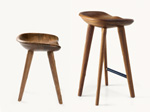 BassamFellows Tractor Stools in solid carved walnut 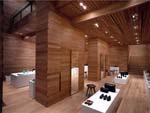 BassamFellows BassamFellows Bally store in Berlin 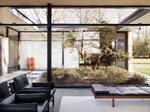 BassamFellows Daybed in solid Santos Rosewood and Low Back Lounge Chairs with solid Santos Rosewood frame 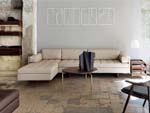 BassamFellows Asymmetric Sofa installation, BassamFellows LIfestyle Gallery, Milan 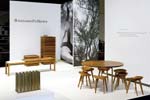 BassamFellows Salone de Mobile, Milan (2003) 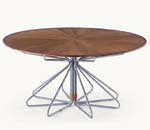 BassamFellows Geometric Dining Table in veneered walnut with carved solid walnut edge 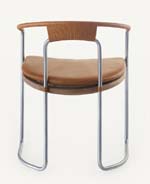 BassamFellows Geometric Dining Chair in walnut and satin nickel-plated steel 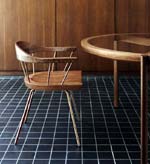 BassamFellows Spindle Side Chair in carved, solid walnut and satin brass plate, and Spoke Dining Table in carved solid walnut  BassamFellows Slat Bench in Iroko, with cushion 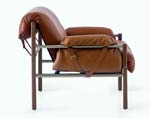 BassamFellows Sling Club Chair in walnut and satin nickel-plated steel  BassamFellows Daybed in walnut and satin nickel-plated steel 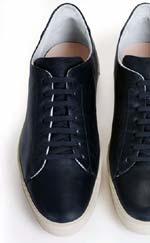 BassamFellows BassamFellows Crombie Sneaker 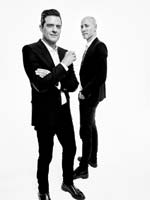 Peter Hapak Scott Fellows (left) and Craig Bassam |
© 2018 ArchNewsNow.com